Harvesting young cassava broken after storm
In Dai Dong commune, with more than 300 hectares of cassava, the recent flood caused over 200 hectares to be heavily flooded. The entire cassava area, which was not yet ready for harvest, was severely affected: tubers were waterlogged, rotten, leaves fell early, and stems were broken and rotten.
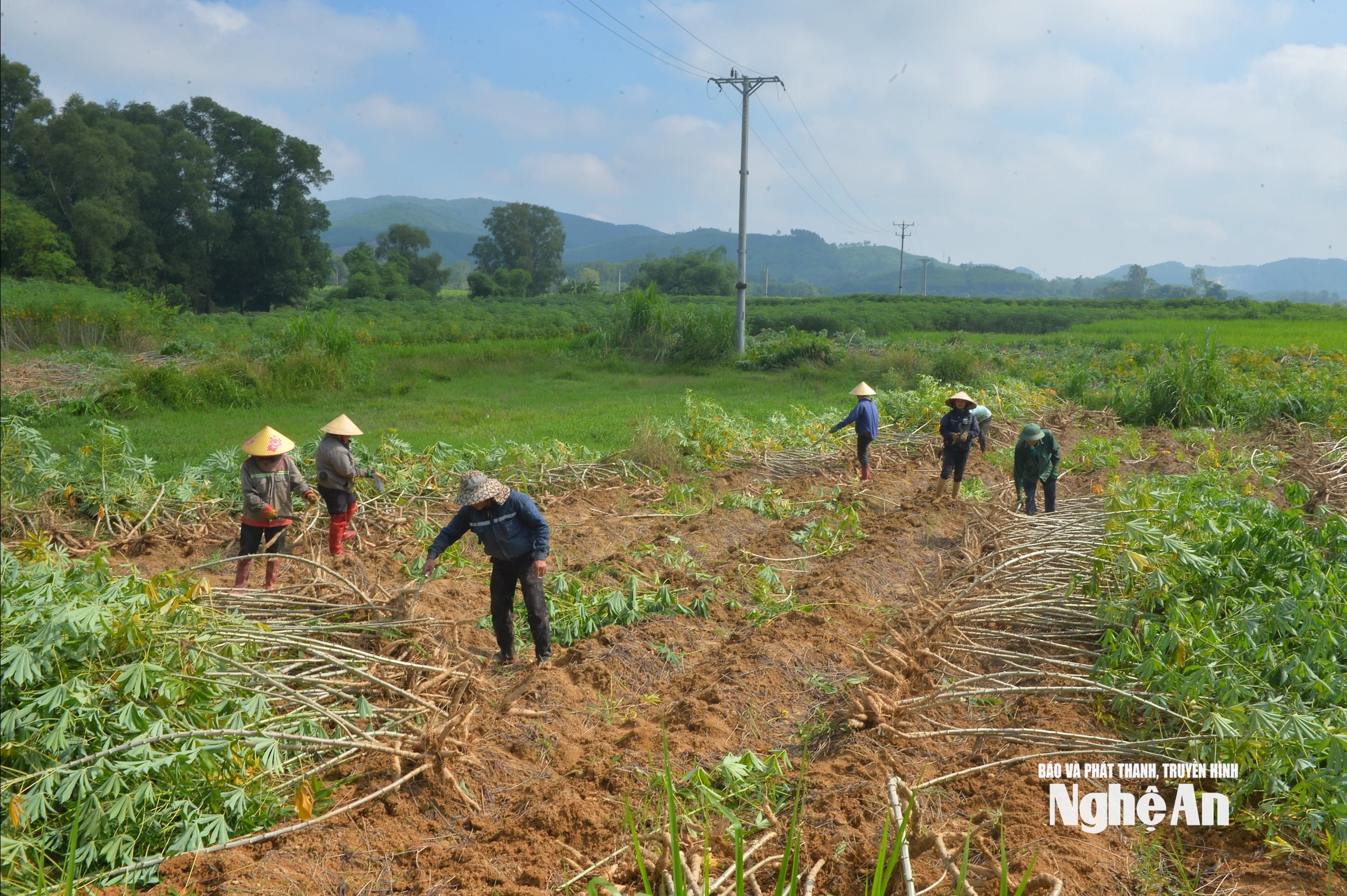
Ms. Nguyen Thi Le (65 years old), in Yen Xuan hamlet said: “My family planted 8 sao of cassava, after the storm many trees fell, tubers rotted en masse. Now we have harvested about 3 tons, selling is not enough to cover the cost of seeds and fertilizer. Considered a heavy loss”.
According to local people, cassava is usually planted at the end of the previous year and harvested at the end of the following year. However, after the storm, the trees fell and the tubers quickly spoiled, so people were forced to harvest them early, even though the quality and yield both decreased. To save the crop, many families had to cut down trees, hire plows or buffaloes and cows to turn each row of cassava, then mobilize relatives to pull out the tubers, shake off the soil, and load them onto trucks to transport them to consumers. Many places organized labor exchanges to help each other overcome difficulties.
Mr. Tuong Dang Hao - Vice Chairman of Dai Dong Commune People's Committee said that the commune is guiding people to prepare damage records to propose support from all levels. At the same time, the government is also recalculating the crop structure, choosing cassava varieties with short growing time, better resistance, and encouraging cooperation with consumption factories to reduce risks.
In order to support farmers in difficult times, Thanh Chuong Cassava Starch Factory has flexibly adjusted its production plan. According to Mr. Tran Quoc Hoan - Factory Director, this year the factory started purchasing cassava from September, 2 months earlier than every year. "We accept buying young cassava to help farmers limit losses. Although the quality is not as good as the main crop, at least farmers can still recover some of it."
Not only Dai Dong commune, many neighboring communes such as Kim Bang, Hoa Quan, Bich Hao... are also affected similarly. When the water recedes, people urgently harvest young cassava to avoid rotting completely. However, because the cassava is not old enough, the yield is low, and the cost of harvesting and transporting is high, many households cannot avoid losing money.
Broken glue is sold cheaply and no one buys it.
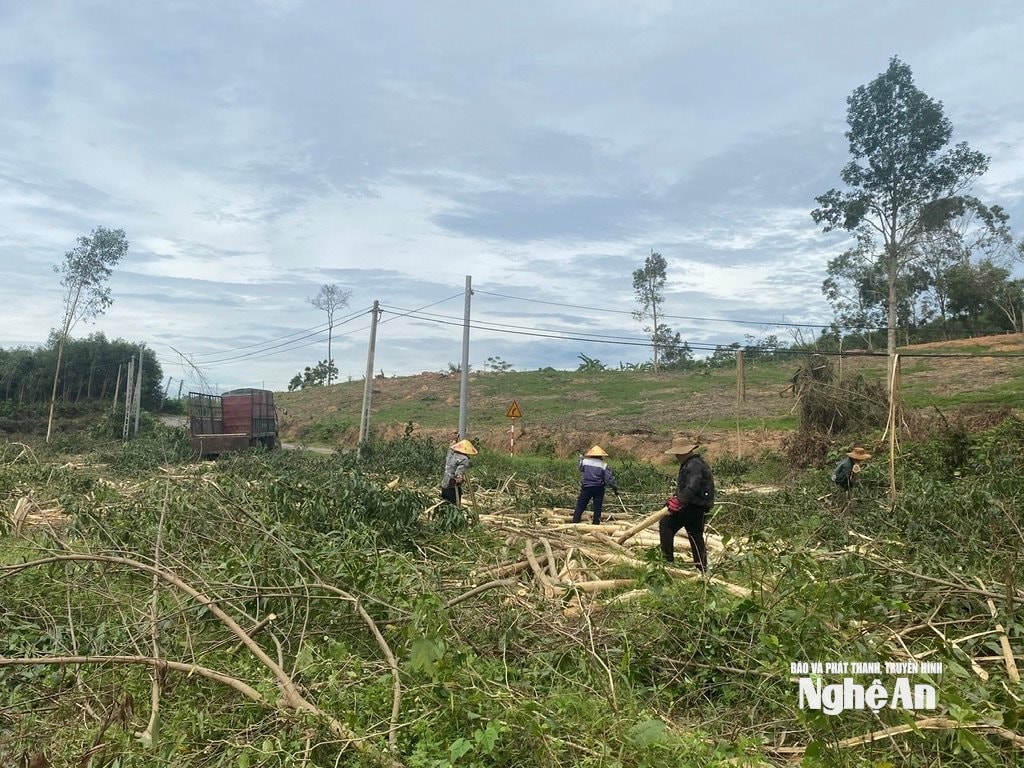
Not only cassava, acacia trees - one of the main sources of income for people in the midlands and mountainous areas - were also severely damaged by the storm. In Nghia Loc commune, acacia forests were broken across the hillsides, many areas were not yet ready for exploitation, and were located deep in inaccessible areas, making clearing and transportation extremely difficult.
Mr. Nguyen Van On in Tap Lap hamlet said he planted nearly 8 hectares of acacia trees 2-3 years ago. After the storm, all of them were broken and suffered heavy damage. “We sold them for about 180 million VND, but it was not enough to cover the cost of seeds and care for the past few years,” Mr. On sighed.
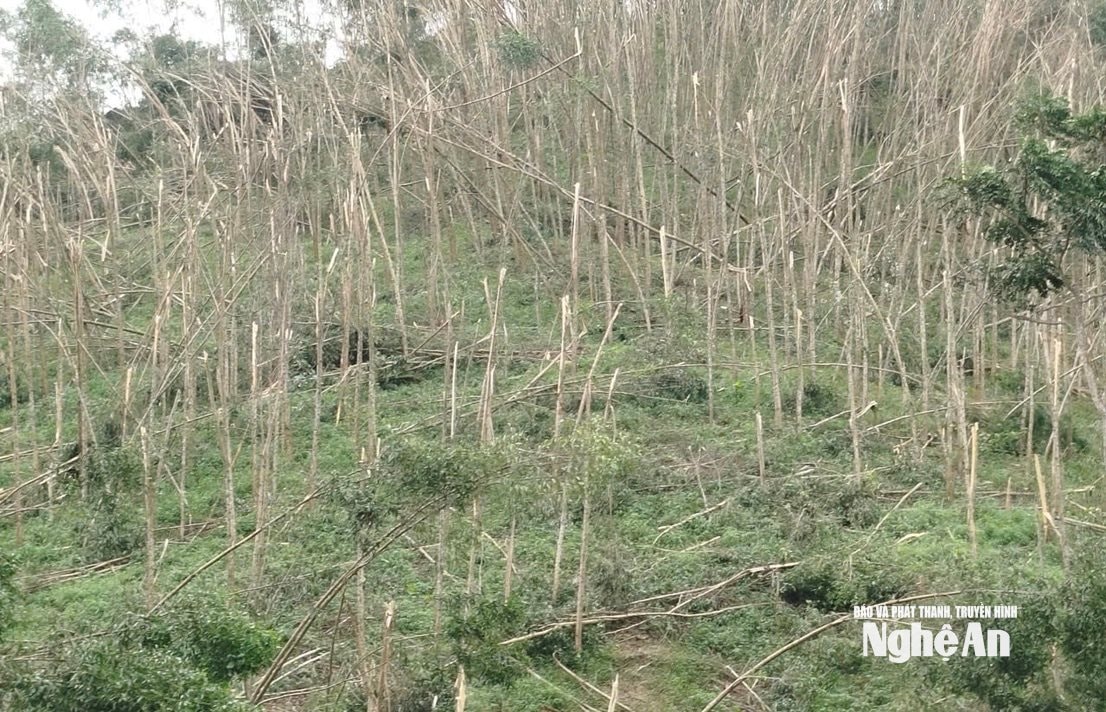
A similar situation happened to Mr. Han Van Tuan in Van Loc hamlet. His 10-hectare acacia forest was completely destroyed by the storm. “The road to the forest is far, the ground is slippery and muddy, vehicles cannot enter, so we had to let it dry, burn it, and replant it from the beginning. It was a total loss,” said Mr. Tuan. Not far away, Mr. Nguyen Quoc Quan in Hai Lao hamlet only earned 120 million VND from 4 hectares of acacia that were destroyed.
Mr. Lai Van Duong - Vice Chairman of Nghia Loc Commune People's Committee said that the whole commune has 2,500 hectares of acacia, but storm No. 10 has destroyed more than 2,200 hectares. Many areas were isolated, people had to carry each tree to the main road. "In the immediate future, the commune encourages people to quickly harvest when the weather permits, and at the same time, guides replanting to restore the area."
Acacia buyers said: Currently, they only buy acacia in easily accessible places, mainly acacia that is 4 years old or older. Acacia under 3 years old has a very low price, and there are even no buyers due to high transportation costs and substandard wood quality.
Mr. Phan Hong Tien - Director of Do Luong Forestry Company Limited said that out of the total 1,500 hectares of planted forests of the unit, over 1,300 hectares were broken after rain and storms. The affected area is mainly 3-4 year old acacia. Currently, the company cannot hire workers to collect because many households in the area are in the same situation. Besides, consumption is difficult because there are no traders to buy acacia at this time.
According to Nghe An Forest Protection Department, the whole province has more than 7,000 hectares of acacia trees from 3 to 7 years old that were broken in the storm. Of which, people are trying to take advantage of the area from 4-5 years old to sell, the rest are trying to clean up and destroy to soon replant a new crop.
In recent years, cassava and acacia have become the main choices of many households in the midlands and mountainous areas of Nghe An. The advantages of these two plants are that they are easy to grow, require little investment, require little care, and have a relatively stable output. However, the recent storm No. 10 has caused thousands of farming households to suffer, as hundreds of hectares of crops were damaged just a few months to a year before harvest.
In that context, in addition to the people's initiative to overcome difficulties, strong and timely intervention from the government and functional agencies is needed. Support for plant varieties, fertilizers, technical guidance for replanting, and even preferential credit policies... need to be implemented quickly and effectively so that people can soon restore production and stabilize their lives after natural disasters.
Source: https://baonghean.vn/nghe-an-khan-truong-thu-hoach-san-keo-vot-vat-sau-bao-so-10-10307805.html







![[Photo] Super harvest moon shines brightly on Mid-Autumn Festival night around the world](https://vphoto.vietnam.vn/thumb/1200x675/vietnam/resource/IMAGE/2025/10/07/1759816565798_1759814567021-jpg.webp)





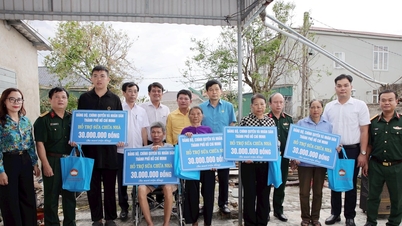


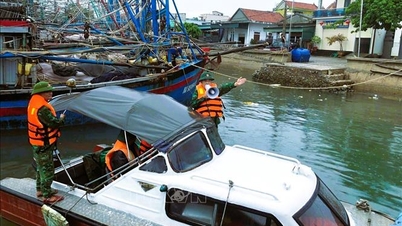

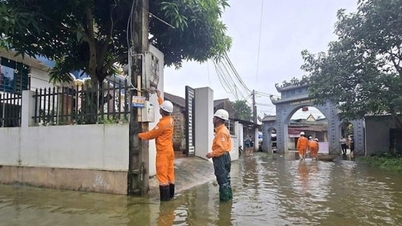














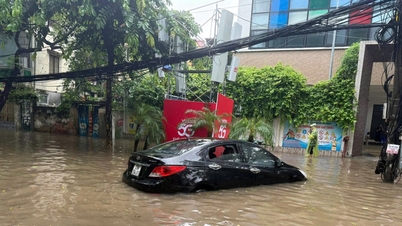




































































Comment (0)